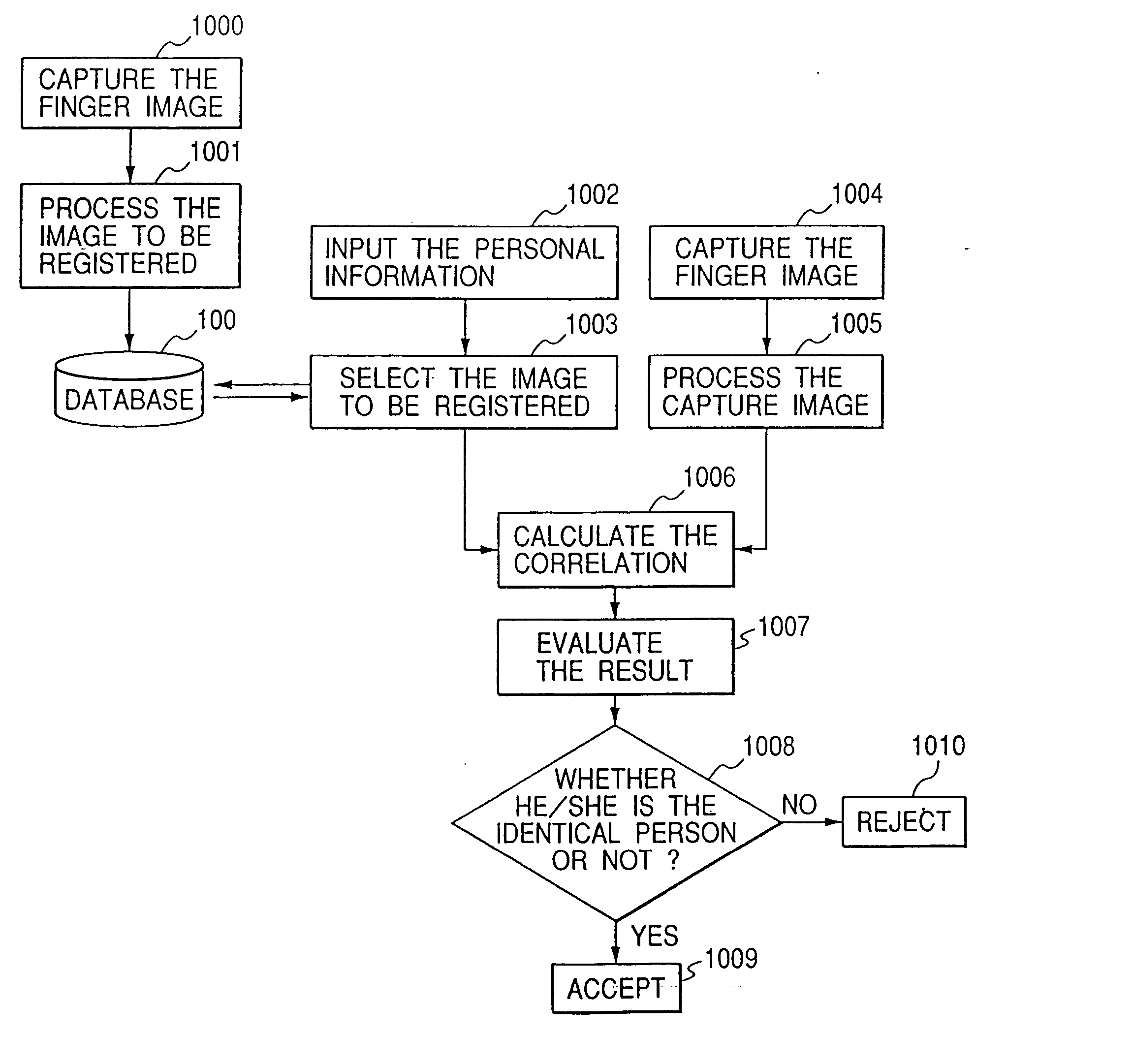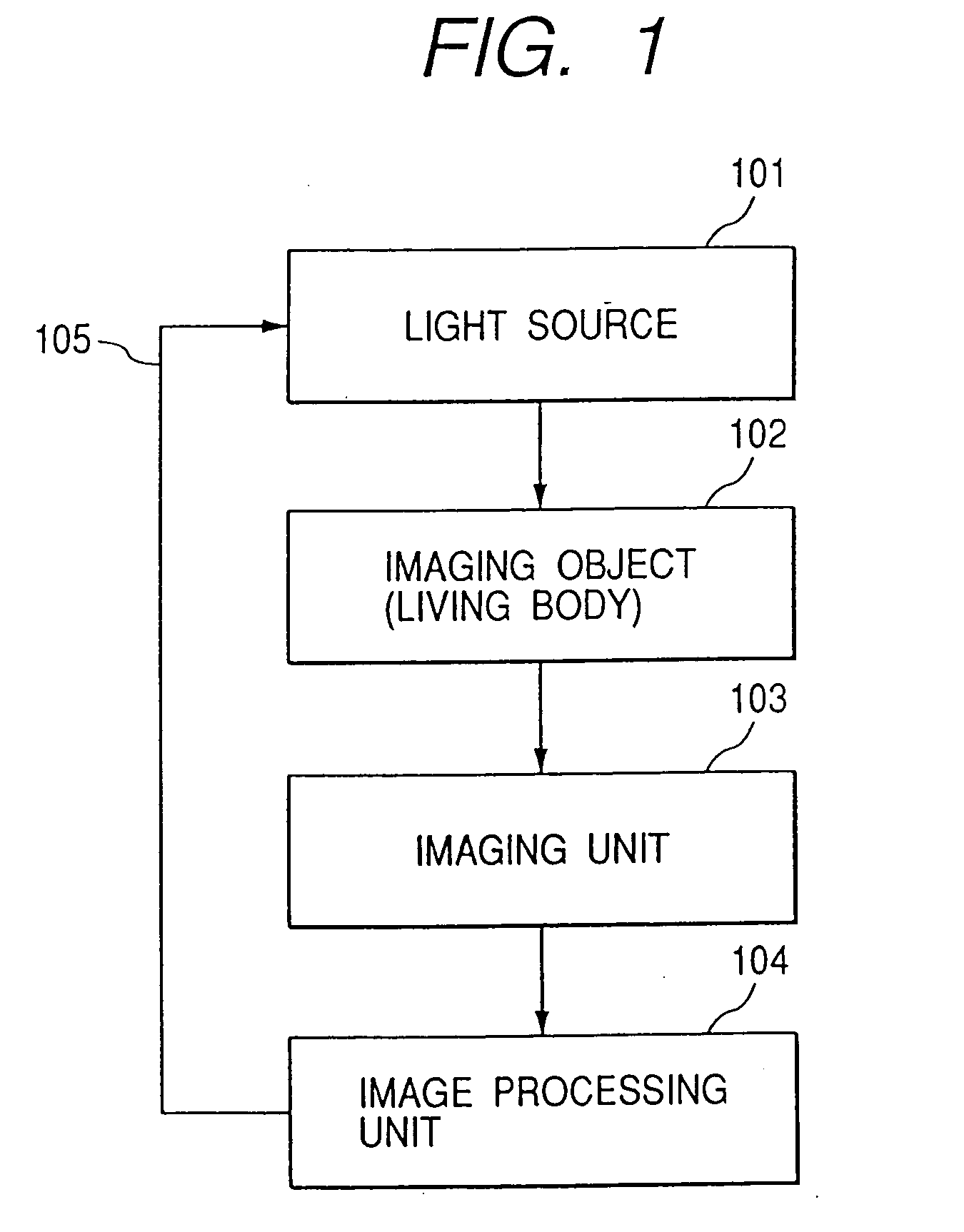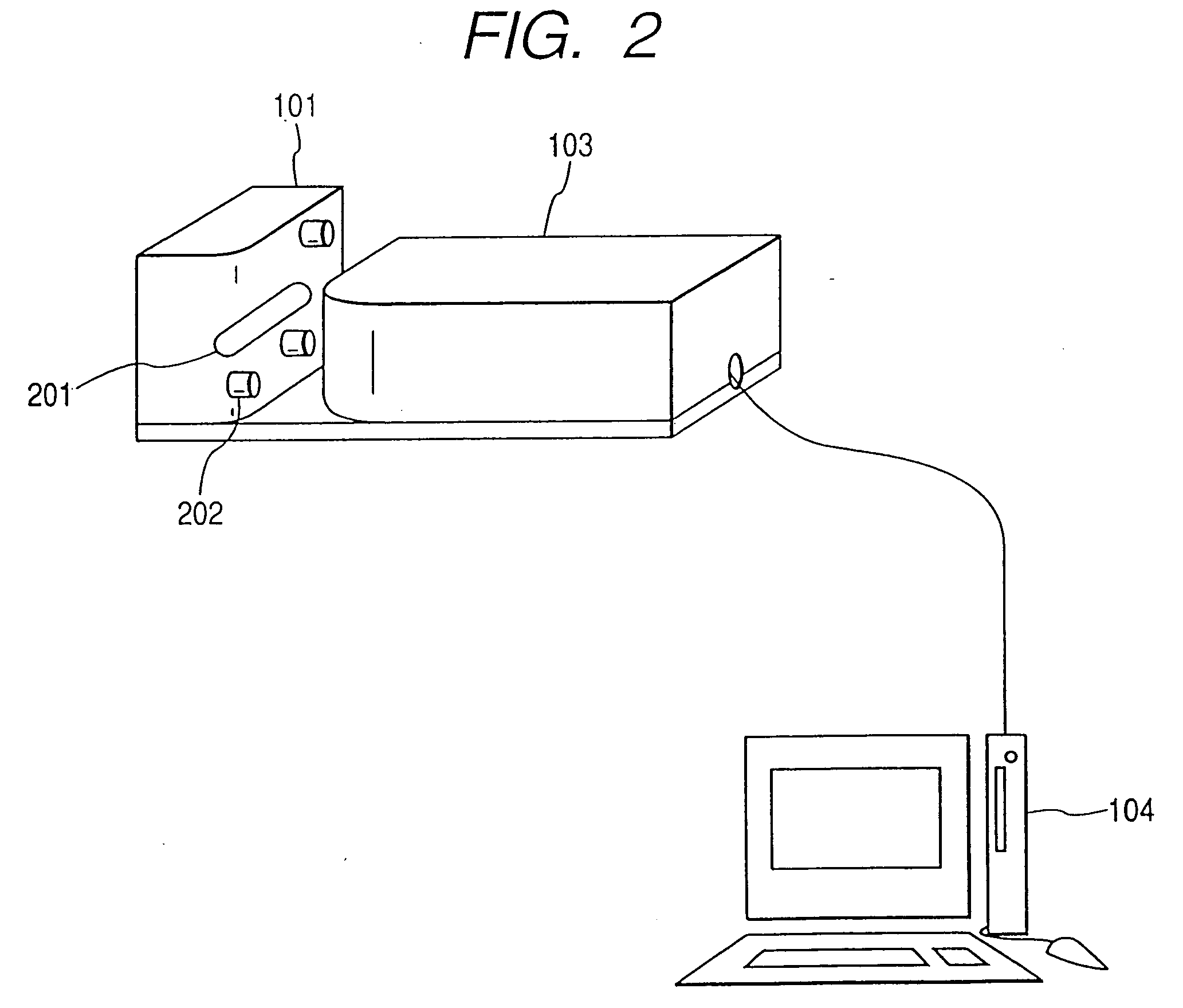Personal identification system
a technology of personal identification and finger veins, applied in the field of personal identification systems, can solve the problems of reducing the performance of identification, affecting the reproducibility of captured images, and unavoidable errors in imaging regions, so as to prevent the performance of identification from being degraded, improve reproducibility, and improve the effect of reproducibility
- Summary
- Abstract
- Description
- Claims
- Application Information
AI Technical Summary
Benefits of technology
Problems solved by technology
Method used
Image
Examples
first embodiment
[0025]FIG. 1 is an example of the basic configuration of a personal identification system. FIG. 2 shows an embodiment of a personal identification system according to the present invention. The system comprises a light source unit 101 that shines a light on a finger, an imaging unit 103 that captures the image of a finger, and an imaging processing unit 104 that processes captured image data. As the light source, a semiconductor light source, such as an LED (Light Emitting Diode), is usually used because of its responsiveness and controllability. A CCD camera is used as the imaging unit. A personal computer is conveniently used as the imaging processing unit 104 that captures an image into the computer via the interface such as an image capture board. The imaging processing unit 104 performs processing necessary for identifying a captured image. Numeral 201 indicates a window through which a light from the light source transmits. An automatic shutter may be provided on the window to...
second embodiment
[0055] In the first embodiment, a finger is imaged with one CCD camera. A finger may also be imaged with a plurality of CCD cameras during authentication or image capturing to increase the performance of identification.
[0056]FIG. 5 shows the arrangement of this embodiment where a plurality of CCD cameras are used; that is, a light source 301, a finger 302, and CCD cameras (303-1-303-5) are arranged as shown. In this embodiment, a plurality of finger vein patterns are captured from a plurality of directions using a plurality of CCD cameras, and the pattern most similar to the registered vein pattern is selected for authentication. Alternatively, a plurality of vein patterns to be registered are captured and saved as three-dimensional data and, from these patterns, the pattern most similar to the vein pattern to be authenticated is selected for authentication. This method is particularly effective for preventing the performance of identification from being degraded when the finger is...
third embodiment
[0059]FIGS. 13A-13C are block diagrams showing in detail one example of blood vessel emphasizing processing (corresponds to blocks 1101-1103 in FIG. 11). When a finger image is received (block 1000 or 1004), edge detection processing is performed to detect the location of the finger edge (block 1300). Based on the detected edge location, image rotation processing is performed so that the image is rotated such that the finger is inclined at a fixed angle, typically, at an angle of 0 degree (block 1301). Blood pattern emphasizing processing is performed for the obtained image (block 1302).
[0060] For example, blood pattern enhancement processing is performed using a filter, such as the one shown in FIG. 13B, designed to remove high-frequency components in the major axis direction of the finger, and low-frequency components in the minor axis direction. Filtering may be done either by the convolution operation (formula 1) in the real space or by the multiplication operation in the frequ...
PUM
 Login to View More
Login to View More Abstract
Description
Claims
Application Information
 Login to View More
Login to View More - R&D
- Intellectual Property
- Life Sciences
- Materials
- Tech Scout
- Unparalleled Data Quality
- Higher Quality Content
- 60% Fewer Hallucinations
Browse by: Latest US Patents, China's latest patents, Technical Efficacy Thesaurus, Application Domain, Technology Topic, Popular Technical Reports.
© 2025 PatSnap. All rights reserved.Legal|Privacy policy|Modern Slavery Act Transparency Statement|Sitemap|About US| Contact US: help@patsnap.com



